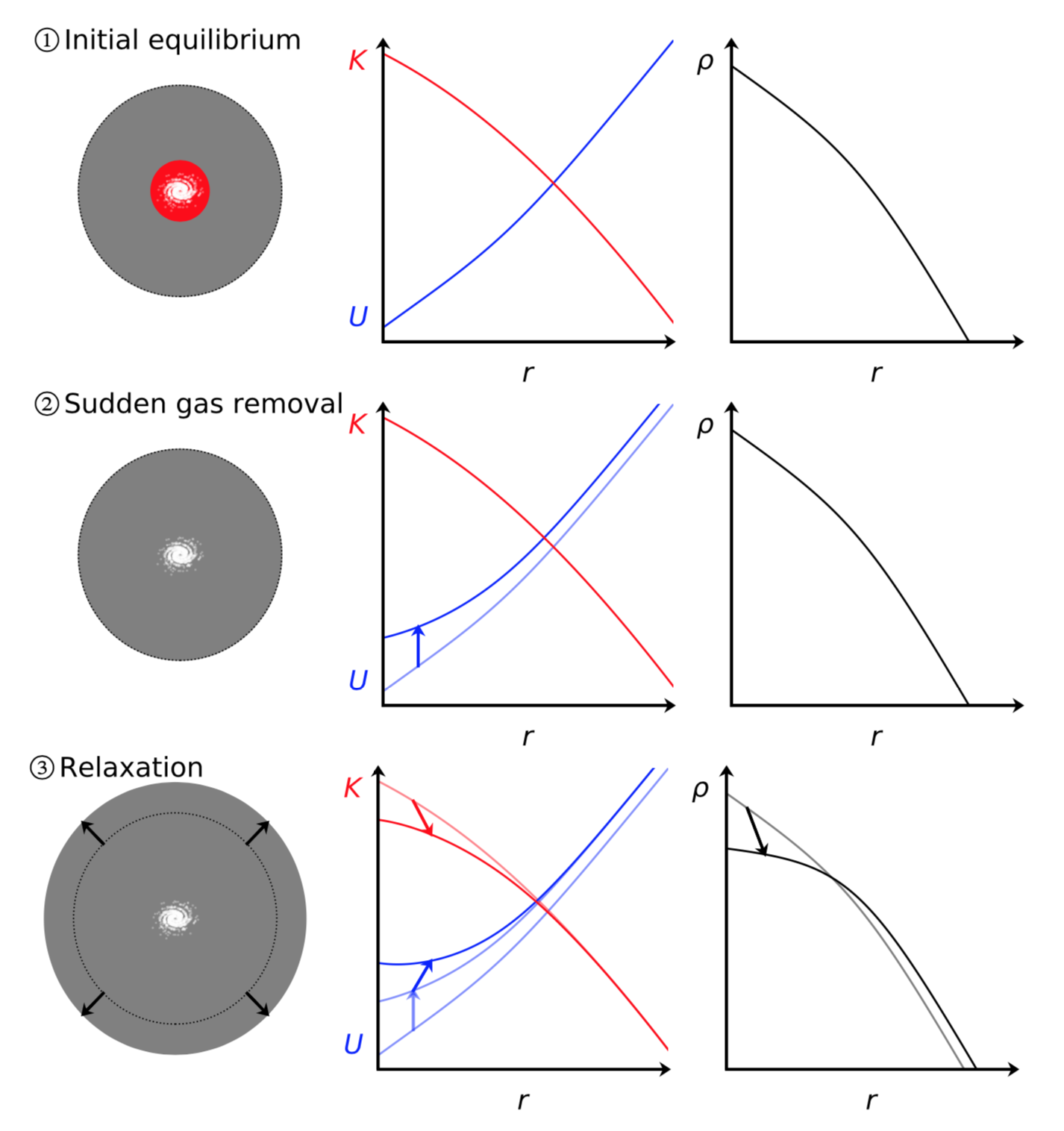CuspCore: a model for core formation in dark matter haloes and ultra-diffuse galaxies by outflow episodes
This python program implements the model presented in Freundlich et al. 2020a (and summarized here) for the response of a dissipationless spherical system to an instantaneous mass change at its centre. This model is meant to describe the formation of flat cores in dark matter haloes and ultra-diffuse galaxies from feedback-driven outflow episodes. The halo response is divided into an instantaneous change of potential at contant velocities followed by an energy-conserving relaxation.
The different steps assumed by the model are illustrated below: (1) the initial dark matter halo is at equilibrium with its baryonic components (stars and gas), its kinetic energy K set by the Jeans equation; (2) after a sudden gas mass loss, the gravitational potential energy U adjusts instantly while the velocities and the kinetic energy remain frozen to their velocities, bring the halo to an out-of-equilibrium transitional state; and (3) the halo relaxes to a new equilibrium, leading to the expansion of the dark matter distribution. The core assumption of the model is that the total energy E=U+K is conserved for each shell enclosing a given dark matter mass, which is treated in the code as a least-square minimisation of the difference between the final and the initial energy of each shell. The model makes use of the dark matter halo parametrisation advocated by Freundlich et al. 2020b.
